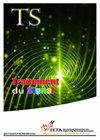Enhanced Identification of Internal Casting Defects in Vehicle Wheels Using YOLO Object Detection and X-Ray Inspection
IF 1.2
4区 计算机科学
Q4 COMPUTER SCIENCE, ARTIFICIAL INTELLIGENCE
引用次数: 0
Abstract
In the rapidly evolving automobile industry, the safety and quality of individual vehicle components have gained paramount importance. Among these, aluminum wheels are particularly critical, given their susceptibility to internal casting defects. This study presents a novel approach to identify these defects non-destructively, employing X-ray inspection and harnessing the power of YOLO (You Only Look Once) object detection. Images of vehicle aluminum wheels were obtained via X-ray inspection, revealing the presence of internal defects. Subsequently, a periodic noise e.limination algorithm, underpinned by morphological filtering and adaptive image processing weights, was utilized to enhance the image clarity. The application of a composite cascade filter further improved the image resolution. The enhanced images were then processed using YOLO object detection, a cutting-edge technology renowned for its precision in object detection tasks. This study explores the efficacy of different YOLO model architectures in detecting and identifying internal casting defects in aluminum wheels. Our research contributes to the development of a highly accurate system for the detection of internal casting defects in vehicle wheels, offering potential improvements in vehicle safety. This methodology, pairing X-ray inspection with advanced object detection algorithms, provides a robust approach for defect identification in the production process, laying the groundwork for future advancements in vehicle component quality control.基于YOLO物体检测和x射线检测的车辆车轮铸造内部缺陷识别技术
本文章由计算机程序翻译,如有差异,请以英文原文为准。
求助全文
约1分钟内获得全文
求助全文
来源期刊

Traitement Du Signal
工程技术-工程:电子与电气
自引率
21.10%
发文量
162
审稿时长
>12 weeks
期刊介绍:
The TS provides rapid dissemination of original research in the field of signal processing, imaging and visioning. Since its founding in 1984, the journal has published articles that present original research results of a fundamental, methodological or applied nature. The editorial board welcomes articles on the latest and most promising results of academic research, including both theoretical results and case studies.
The TS welcomes original research papers, technical notes and review articles on various disciplines, including but not limited to:
Signal processing
Imaging
Visioning
Control
Filtering
Compression
Data transmission
Noise reduction
Deconvolution
Prediction
Identification
Classification.
 求助内容:
求助内容: 应助结果提醒方式:
应助结果提醒方式:


